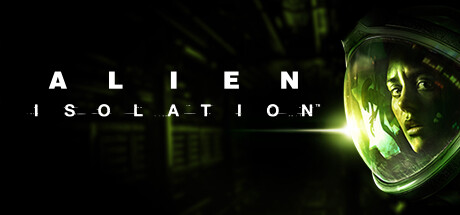Memory Isolation: The Game! Mac OS
memory protection
Manipulating a process's memory behind its back is a Bad Thing and is fraught with peril. That's why Mac OS X (like any Unix system) has protected memory, and keeps processes isolated from one another. Of course it can be done: There are facilities for shared memory. DLGamer allows you to download Alien: Isolation - The Collection (Mac), legally and securely. Official distributor and partner of major publishers, we are committed to bring you the best prices on Steam, Origin, Uplay and Gamecards keys always focusing on providing quality customer service, 7 days a.
[Mac Os Memory Management
′mem·rē prə′tek·shən]Memory Protection
the hardware and software methods for the prevention of the writing or reading of information at an unauthorized address in the memory of a computer or computing system.
Memory protection is based on the division of the memory of a digital computer, either by software or by hardware, into a sequence of segments and the providing of each segment or group of segments with a code key, which is stored in the same or in a special memory. During a memory cycle the segment and the corresponding key are determined; then the key is compared with the authorized key of the memory protection, which is specified in the same instruction or in a supervisory program. A discrepancy in the keys is regarded as a memory protection violation, and the execution of the program is interrupted. The interruption of the program is organized so that the protected region of memory is left un-changed. Memory protection functions during every memory cycle, either in the cycle for writing information or in the information reading cycle, or in both.
Memory protection preserves the contents of specified regions of memory from loss of information during program execution as a result of erroneous transmission of information caused by failures or breakdowns in the equipment or in the supervisory program of the digital computer, or those caused by mistakes of the programmer or user; it also prevents information from falling into the hands of an unauthorized user through accidental or intentional interference.
Hardware methods of memory protection include storage devices for the protection keys; the capacity of these devices corresponds to the number of protected segments, and the speed is greater by a factor of 10 than that of the digital computer’s working memory. In addition, there are circuits for the comparison of the protection keys and for the interruption and indication of memory protection violations. Software means of memory protection include programs for monitoring the memory segments, encoding them, and compiling tables of correspondence; programs for the dynamic redistribution of memory protection according to user’s instructions and according to the parameters of the simultaneously solved tasks; and programs for the analysis of the causes of memory protection violations and the adoption of solutions for their elimination.
Memory protection increases the efficiency of digital computer operation, reducing time losses caused by the search for errors and repeated computation resulting from loss of information. Memory protection is necessary for the simultaneous solution of several problems on one digital computer in a time-sharing system, for the simultaneous service of several users, for the use of program libraries and archives belonging to several users, and for the simultaneous operation of several on-line units.

memory protection
(memory management)The effectiveness of memory protection varies from one operating system to another. In most versions of Unix it is almost impossible to corrupt another process' memory, except in some archaic implementations and Lunix (not Linux!). Under Microsoft Windows (version? hardware?) any 16 bit application(?) can circumvent the memory protection, often leading to one or more GPFs. Currently (April 1996) neither Microsoft Windows 3.1, Windows 95, nor Mac OS offer memory protection. Windows NT has it, and Mac OS System 8 will offer a form of memory protection.
memory protection
A technique that prohibits one program in memory from accidentally clobbering another active program in memory. Using various methods, a protective boundary is created around the program, and instructions within the program are prohibited from referencing data outside of that boundary.When a program erroneously points to data or instructions beyond its boundary, earlier personal computer operating systems, such as DOS, Windows 3.x and Windows 95/98, simply froze (crashed, bombed). Operating systems such as Unix, Linux and subsequent versions of Windows are more robust and generally allow the errant program to be closed without affecting the remaining active programs. See abend and memory.
Memory Isolation: The Game Mac Os X
Want to thank TFD for its existence? Tell a friend about us, add a link to this page, or visit the webmaster's page for free fun content.
Link to this page:
Free Games For Mac Os X
Alien: Isolation, Alien, Aliens, Alien 3 TM & © 2014 – 2015 Twentieth Century Fox Film Corporation. All rights reserved. Twentieth Century Fox, Alien, Aliens, Alien 3 and their associated logos are registered trademarks or trademarks of Twentieth Century Fox Film Corporation. Alien: Isolation game software, excluding Twentieth Century Fox elements © SEGA. Originally developed by The Creative Assembly Limited. Developed for and published on Linux and the Mac by Feral Interactive Ltd. Creative Assembly and the Creative Assembly logo are either registered trade marks or trade marks of The Creative Assembly Limited. SEGA and the SEGA logo are either registered trade marks or trade marks of SEGA Corporation. All rights reserved. Linux® is the registered trademark of Linus Torvalds in the U.S. and other countries. Mac and the Mac logo are trademarks of Apple Inc., registered in the U.S. and other countries. Feral and the Feral logo are trademarks of Feral Interactive Ltd. All other trademarks and copyrights are the property of their respective owners. All rights reserved. Without limiting the rights under copyright, unauthorised copying, adaptation, rental, lending, distribution, extraction, re-sale, renting, broadcast, public performance, or transmissions by any means of this Game or accompanying documentation or part thereof is prohibited except as otherwise permitted by SEGA.